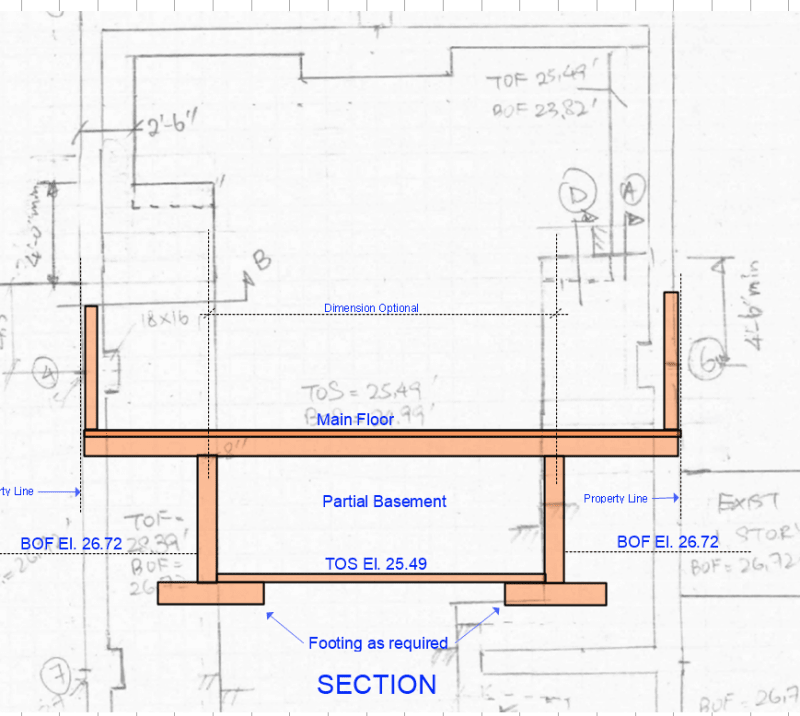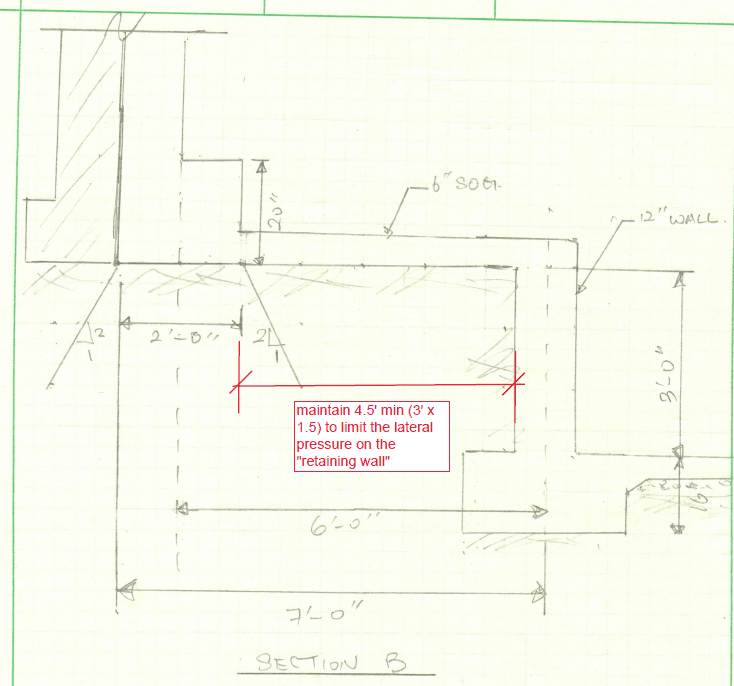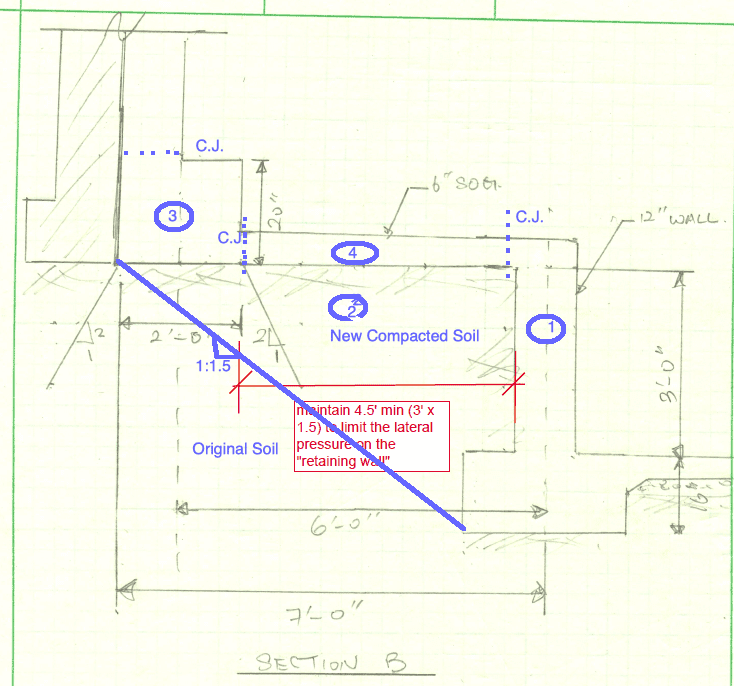TimeToPlay
Structural
Hi all,
This is new 4 story high concrete building with an existing structure on the west side and an existing 1 and 2 story building on the right side. There is a 2" gap between this new building and the existing adjacent buildings.
To avoid underpinning the neigbors's footing, the owner is willing to install the new footing at the same elevation as the adjacent existing footings and partial give up some of the interior space. However, there is a catch. The owner wants to maintain a desirable headroom around the center of the cellar. Therefore, I have came up with a "step" footing design to address the owner's need. Please see attached rough sketch showing the plan and sections.
I am not too sure if this design will "work".
So my questions for all of you are:
1) I am curious if anyone has designed something similar to avoid underpinning.
2) I am assuming the 20" deep footings bear on the concrete and soil below. Then the bearing stress on the concrete will transfer to the soil below.
3) Does my proposed design work without disturbing the adj footings? This detail maintains a 1V:1.5H slope.
Any suggestion is appreicated.
Thank you!
This is new 4 story high concrete building with an existing structure on the west side and an existing 1 and 2 story building on the right side. There is a 2" gap between this new building and the existing adjacent buildings.
To avoid underpinning the neigbors's footing, the owner is willing to install the new footing at the same elevation as the adjacent existing footings and partial give up some of the interior space. However, there is a catch. The owner wants to maintain a desirable headroom around the center of the cellar. Therefore, I have came up with a "step" footing design to address the owner's need. Please see attached rough sketch showing the plan and sections.
I am not too sure if this design will "work".
So my questions for all of you are:
1) I am curious if anyone has designed something similar to avoid underpinning.
2) I am assuming the 20" deep footings bear on the concrete and soil below. Then the bearing stress on the concrete will transfer to the soil below.
3) Does my proposed design work without disturbing the adj footings? This detail maintains a 1V:1.5H slope.
Any suggestion is appreicated.
Thank you!

![[idea] [idea] [idea]](/data/assets/smilies/idea.gif)


